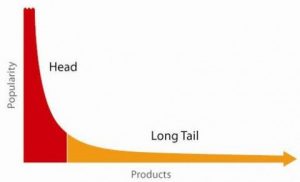Most people, and I’m afraid that probably means you, are followers. That doesn’t mean you should stop reading this article.
Leadership qualities and job titles are not easy bedfellows. Most people in leadership positions are there because they possess great skills. They’re master administrators, team builders, perceptive, communicators, adroit politicians, great negotiators or, as is sometimes the case, simply have louder and more aggressive personalities.
Many are risk takers. They take the right risks at the right time. They know how to assess risk. They run the scenarios that help them make better decisions. If you’re not a risk taker then you may be a manager, not a leader. Great leaders innovate. Business as usual is not a recipe for success in the long term. New markets, new products, new process, new cost and efficiency gains. The key word is new and new always has risk. If you don’t innovate you will die. It might be a slow, lingering decline simply because your core business is threatened by new technologies and you didn’t innovate quickly enough or well enough. Think of digital photography’s impact on Kodak. They had decades of warning and failed to take the correct risks. A failure of leadership ultimately.
The decline could be more rapid. A new entrant in an existing market. Apple and Android’s impact on Nokia is a fine example. They had a window of opportunity to innovate to compete. They were so confident of their brand that they didn’t innovate hard enough, fast enough or well enough. If they had run the right risk scenarios they would have known that an open source smartphone was a game changer. Their decline will be a case study for college kids for decades to come.
And so it is with open source in the application stack. It’s not a follower’s proposition. Followers will buy Salesforce and Dynamics. No risk there apparently. Just the requirement for very large budgets and the willingness to cede regulatory control to omnivorous vendors with a track record.
Leaders will have broader horizons. Leaders will run the risk scenarios. Leaders will do the research. Increasingly, many leaders are coming to the same conclusion: Handing over a large, regular sum of revenue to proprietary vendors curating commoditised business applications that are available as open source makes no sense.
As competitive pressure from emerging economies increases so does pressure on margins. There’s a reason why emerging economies can do business at lower cost and it’s not all about wage costs. They also run leaner.
There’s no better example of this than Salesforce’s sales office distribution. Nearly 57% of the world’s G20 population is in China and India, the powerhouses of the emerging economies. Salesforce has 16 sales offices in Europe. Europe has 16% of the world’s G20 population. That’s a sales office for every 1%. They have 5 offices in China and India. That’s a sales office for every 11.5%.
Why? Because emerging economies don’t need the astronomically high fees that Salesforce charges. They use open source. Open source dramatically lowers costs their costs compared to their Western counterparts. It keeps them lean. It keeps their cost base low.
Meanwhile, Salesforce concentrates efforts on advanced economies, piling cost on customers and making Western companies even less competitive. More fool the West.
There’s a long tail to open source CRM in the advanced economies. At the Head of the tail are small enterprises who either cannot afford the astronomic fees charged by the major vendors or don’t have the minimum number of users to get them interested. Many of these are the medium (and sometimes large) businesses of tomorrow.

The foot of the tail comprises of leaders in large organisations. The foot comprises of multi-national corporates, large and medium sized enterprises and large non-governmental organisations. I wish we could add local and central government to that but there’s little evidence to support engagement with this client group.
The leaders in these large companies are engaging with the SuiteCRM project. We have experienced a marked uptick in the number of enquiries from the enterprise over the last 12 months. Large global concerns facing increased competition. Business as usual is not an option. Lean and agile is.
The leaders in these organisations do their homework. They download the software. They deploy it and experiment with it. They are in command of the figures. They know that an open source SuiteCRM implementation project cost is around 15% of the cost of doing an equivalent project with Salesforce. Less pressure on capital budgets. They know that their ongoing cost of ownership is at around 15% of Salesforce. Less pressure on revenue budgets. They know that the functional gap between the two applications is very low. They recognise that it’s impossible to justify the chasmic cost differentials when lean and agile is a primary requirement to compete.
So, our question to you is “are you a follower or a leader?”